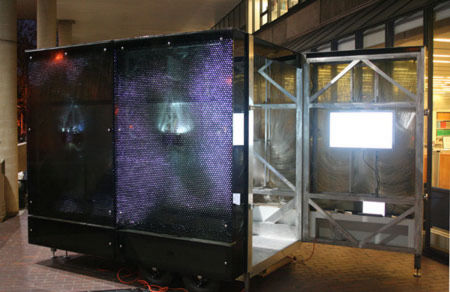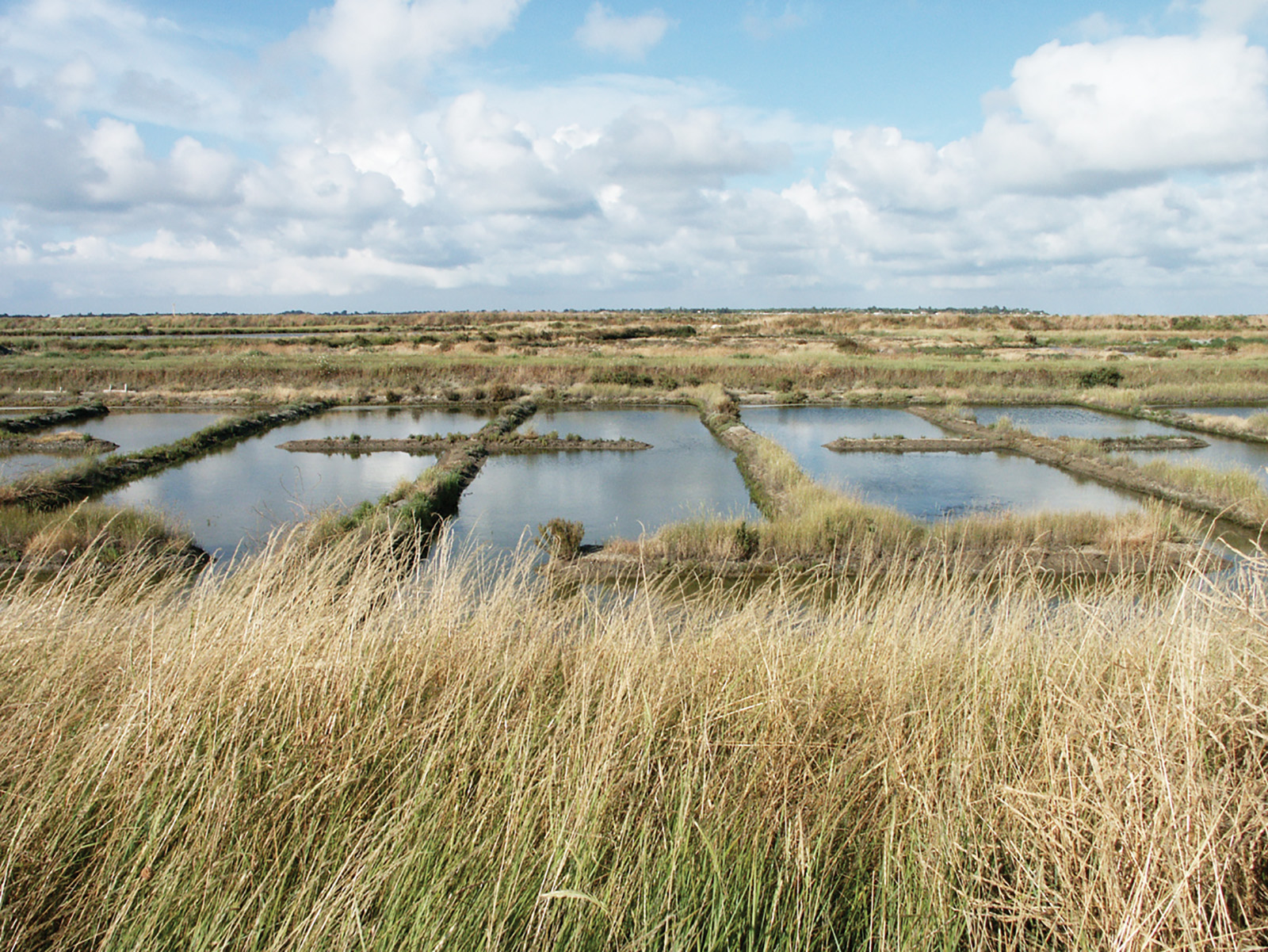Mobile Information Unit
The Mobile Information Unit (MIU) is an interdisciplinary research project involving several faculty members at the Harvard Graduate School of Design, the Harvard Art Musuem, as well as other arts-related groups and initiatives at Harvard. The goal was to create an innovative, interactive information kiosk that would allow digital artists a means of exploring their work, while at the same time disseminating information about events centered around the arts at Harvard. As a result from a student competition hosted in a class taught by Prof. Martin Bechthold, and in collaboration with classes taught by Allen Sayegh, the winning scheme proposes a large interactive fiber-optic display on the exterior, with more targeted displays and touchscreens on the interior of a mobile structure.
Fabrication and prototyping took place at the GSD fabrication labs. The unit was first deployed on the occasion of the Harvard GSD Open House on November 7, 2008. More recently it served as a platform to exhibit students work at the April 2009 Open House.
Design Concept: Russ Gould, Jamie Hernandez, Bao Wei; Interactivity: Yen-Tine Cho; Ventilation Study: Masayosh Oka; Fabrication Team: Stephen Hickey, Jaime Hernandez, Justin Lavallee, Rachel Froman, Anthony Di Mari, Richard Juta, Sabeen Hassa, Michelle Miller, and others. Special thanks to Professors Daniel L. Schodek and Kostas Terzidis for their support and advice!
TransUrban
The indiscriminate proliferation of the word sustainable has created a serious crisis for the concept of sustainability and the word itself. Today every major construction project claims to achieve some state of sustainability or be at least more sustainable than previous projects. In this new world of green conscience, the S word unfortunately has often been manifested as a dubious marketing tool, rather than a respectable fact. The crisis is heightened by the ambiguous definition of sustainability and the lack of clarity about which practices are in fact more sustainable than others. This insecurity often leads to the total negation of the term. Some theorists claim that sustainability is a phantom and in essence unattainable. Some philosophers say the S word is so popular because it soothes society into consumption with a good conscience. Most recent the S word has been dropped altogether and is replaced by the indefinite G word: green.
Inspired by this climate of uncertainty TransUrban was founded to investigate recently built cities that are considered to be at the forefront of sustainability. TransUrban seeks to examine built experiments that go beyond environmental and ecological aspects. These cases should embody complex topics of design, dwelling, community in space, building technologies, environmental strategies, as well as models of affordability, while exploring new trajectories in the development of the city. At best these topographies of change re-contour the forms of urbanism as we know it, and do not conform to generic typologies, but create in concert a shift of paradigms. The patterns that emerge reveal complexity and integrated thinking across disciplines. TransUrban charts this terrain to find applicable design strategies for the future.
The interdisciplinary composition of the TransUrban group aims to address the spectrum of design and planning disciplines – landscape architecture, architecture and urban design and planning- thus allowing the group to examine the built experiments in sustainable cities from many angles. The chosen cases fit a specific profile: each must be recently completed, must be a critical size (minimum of 3,000 inhabitants) and must be internationally acknowledged role models for sustainable city development. In the first phase of data collection TransUrban visits these sites several times and leads extensive discussions with stakeholders, planners, agencies and citizens. In the second phase TransUrban analyzes the accumulated data, compares the original guiding urbanism principles with the ultimate built product and identifies the particular strengths or weaknesses accordingly. In the third phase TransUrban draws conclusions, highlighting new parameters for the future development of similar experiments.
TransUrbans first case study was the new city quarter Vauban: a 38-hectare former barracks site near the town center of Freiburg, Germany. The site was purchased by the city in 1994 with the goal of converting it into a flagship environmental and social project. Vauban comprises today 2,000 homes to house 5,000 people, as well as business units to provide about 500-600 jobs. The project is currently nearing completion and is widely seen as one of the most positive examples in Europe of environmental thinking in relation to urban design.
TransUrban‘s investigative work on Vauban resulted in an exhibition that was shown in five cities in Asia and Europe and the publication of the book TransUrban. Charting Experiments for Cities of the Future. Case I: Vauban in the Design and Technology Series of the Graduate School of Design at Harvard University. A second case study is currently underway. It reviews the recently completed Solar City Linz, Pichling in Austria, a new city quarter with 3,000 inhabitants and a special focus on energy efficiency.
Partners: Thomas Schroepfer, Assistant Professor in Architecture, Graduate School of Design
Limin Hee, Assistant Professor in Urban Design, National University of Singapore
Student Researchers: Jon Kher Kaw, Kyung-Sun Lee, Quilian Riano, Andrew tenBrink
Landing Salt: Industry and the Structure of Places
Dan Adams (MArch ’05)
Landing Salt is a study of the ways that global industry becomes locally situated in urban environments around the world. This project looks at the salt industry in different cultural and geographic context in order to decipher consistencies and variability that occurs in both the industry and the local context in response to industrial landing.
Industries, whether dependent on the ocean for distribution or completely terrestrial, land in specific places and in specific communities, and their presence becomes concrete. The abstract forces and flows of these industries and their activities become manifested in the infrastructure of the cities and towns in which they are located. Is it possible that the often resulting stage of conflict between industry and community is actually a zone of great positive potential for a place? While often ‘bad’ characteristics (pollution, traffic jams, perceptions of low worth and value) result, can the calculated and designed ‘theatre of engagement’ between industries and communities foster new, unique, or even ‘good’ characteristics in a city?
Since undertaking the Druker Fellowship, I’ve continued to reference and build upon this work over the last ten years. As I’m writing this sentence now I’ve just returned from visiting the Salar de Huasco and will visit salt mines in the Atacama Desert tomorrow. The work continues…
Learn more at Landing Studio .


